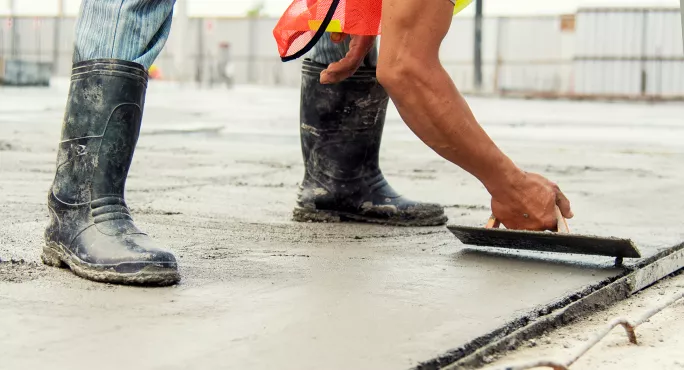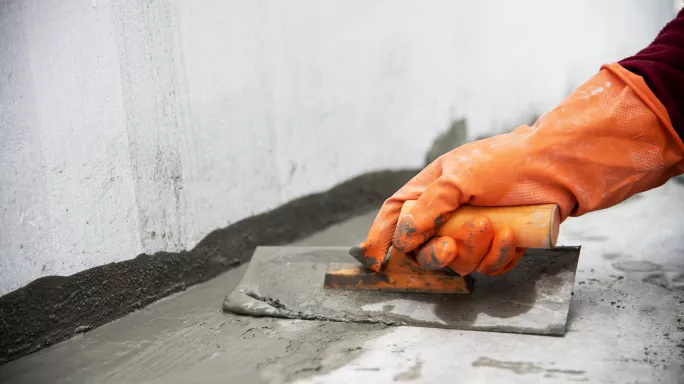RAAC crisis: everything you need to know

The crisis caused by the revelation that reinforced autoclaved aerated concrete (RAAC) in schools could collapse has had a dramatic impact on the start of the school year.
So far the material has been uncovered in more than 150 schools that returned DfE building surveys earlier this year, forcing some to switch to fully remote learning, while thousands more could potentially be affected.
But what exactly is this dangerous material? And how did it come to be so widely used in school buildings?
What is RAAC?
RAAC is a lightweight form of concrete panel that was invented in the 1930s and was popular in the 1950s onwards, used in the construction of thousands of new buildings, including schools, hospitals, courts and council offices.
It was often used in flat roofs because it allowed easy installation of multiple panels across classrooms. Over time, though, it was discovered that due to the porous nature of RAAC, water can enter and corrode the steel reinforcement within.
This makes it prone to collapse, especially if it is not maintained over time. Amy Neeves, head of estates and capital programmes at the David Ross Education Trust, noted in Tes in February 2023 that “the characteristics of RAAC make it potentially dangerous when left unmonitored and unmanaged”.
How serious is this issue?
Very. Roofs can collapse when RAAC deteriorates beyond a certain level - as occurred at a school in Kent in 2018, and again this summer in several schools, which forced the government to order schools at risk to close buildings.
What’s more, structural failures can occur with almost no warning, meaning that children and staff could be at risk without any awareness of the threat or opportunity to escape serious injury.
Because identifying and fixing the issue is complicated and costly, it is unclear how long those schools known to have RAAC will have to wait for it to be fixed.
What is the DfE guidance on RAAC?
In response to the situation, the Department for Education issued guidance at the end of August 2023 providing schools with an overview of the actions they should take to find out whether they have RAAC, and what to do if they identify it.
For schools that have not yet completed the DfE’s survey, they have been given a deadline of 8 September within which to respond.
In schools where RAAC is identified, actions could range from possibly returning to remote education if there is not enough remaining space, to deferring Ofsted inspections due to disruptions caused by having to close buildings.
The guidance also advises schools to put together a contingency plan in case RAAC is confirmed, and to fill in the questionnaire issued to schools if they have not done so already, and await contact from the DfE.
How many schools are affected?
As of 30 August, the DfE list includes 147 named schools that have confirmed the presence of RAAC, which is prone to collapse.
Of these, 43 have had to take actions to mitigate the risk, including 19 that have had to delay the start of term due to RAAC.
Another 20 schools on the list are currently in a mix of face-to-face and remote learning, and four are fully remote.
The Scottish government has said that RAAC had been detected in 37 schools but has not named the schools - it says it is for local authorities to publish that information. Thirty have now been named by councils.

How did we get here?
While the dangers from RAAC have now rocketed up the agenda, the problem has been known about for many years, with reports dating back as far as 1999 warning of the issue.
It was not until the school roof collapse in Kent that the issue started to gain more prominence, with an alert published in 2019 by the Standing Committee on Structural Safety (SCOSS) in response to the incident.
In turn, the DfE began issuing surveys to more than 14,000 schools that it suspects could be affected by RAAC, and many replied - but many thousands more have not, leaving them potentially at risk and without any plans for mitigation.

What has happened politically?
Education secretary Gillian Keegan was caught off-camera as she asked why no one had credited her with doing “a fucking good job” when it came to taking action on RAAC.
The minister’s comments came at the conclusion of an interview with ITV’s Daniel Hewitt, in which she said he had been “pressing me quite hard” and claimed he was “making out it was all my fault”.
Schools minister Nick Gibb was quick to come out in support of his boss, claiming the DfE’s response to the crisis had been “world leading”.
Prime minister Rishi Sunak came under fire from one of his former colleagues, as former permanent secretary at the DfE Jonathan Slater accused him of ignoring “critical risk to life” warnings.
Mr Slater told BBC Radio 4 that, during his tenure, it was concluded that between 300 and 400 schools needed to be replaced each year due to issues with their concrete. The department, however, only received funding to work on about 100 schools a year.
On 7 September school staff union leaders wrote a joint letter to the education secretary with urgent questions about RAAC as they warned that “hundreds more schools” could be affected.
Leaders from the NEU teaching union, the NAHT school leaders’ union, the NASUWT teaching union, Unison, GMB and Unite said the government should issue updated figures on how many schools could be at risk from RAAC.
This followed on from a Labour bid for the publication of documents showing what advice the prime minister was given about RAAC while he was chancellor - which was resisted by the government.
topics in this article



